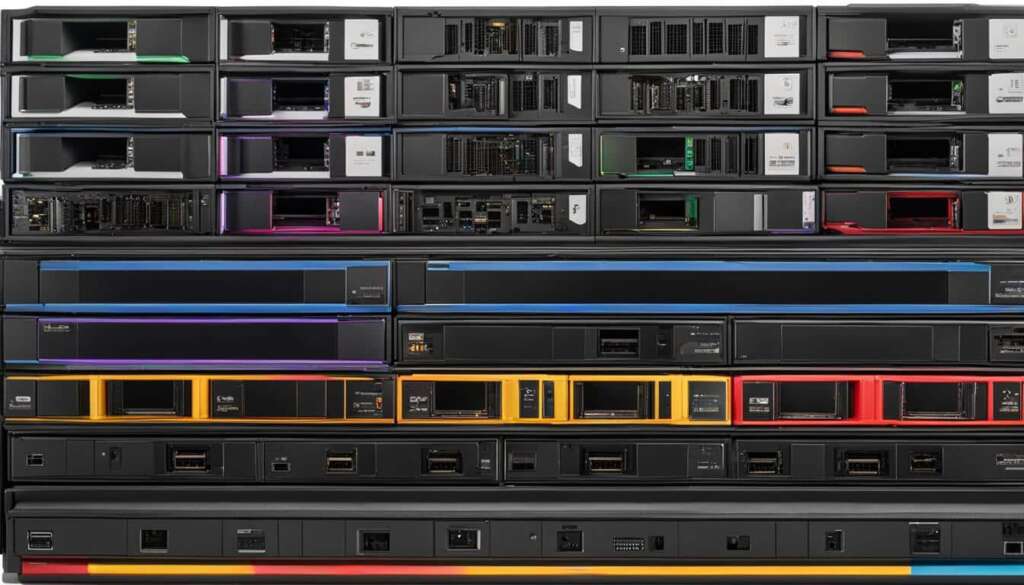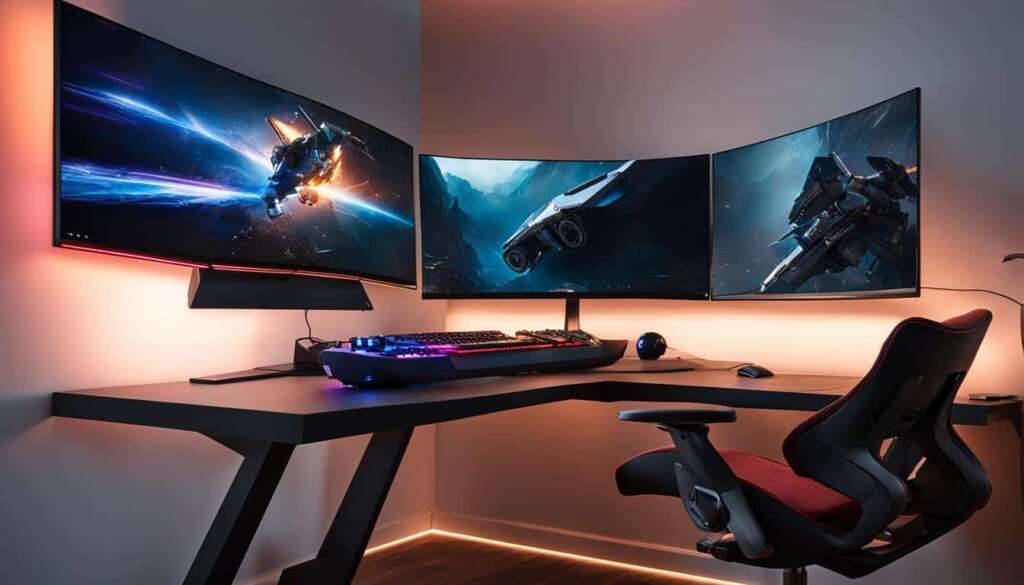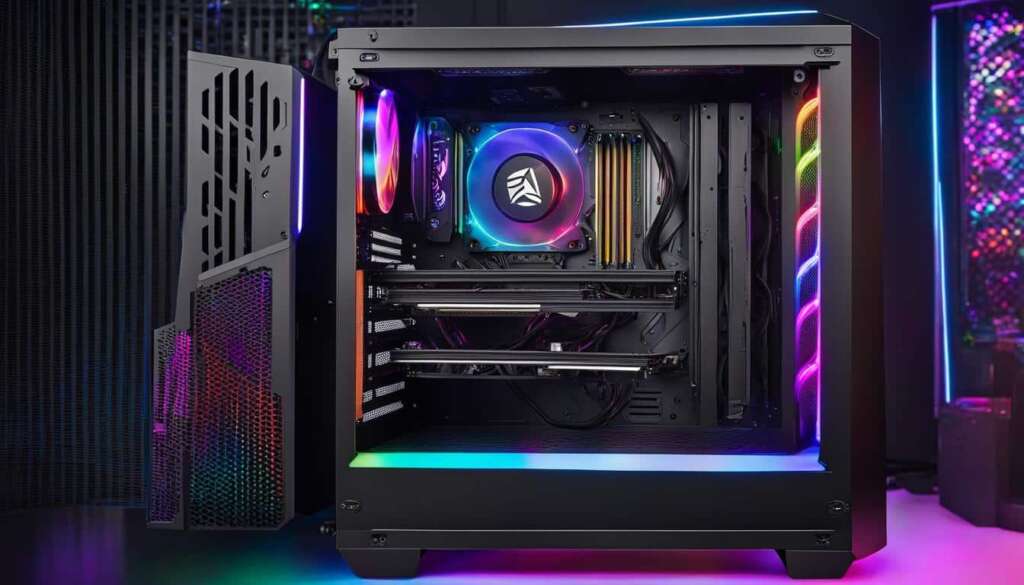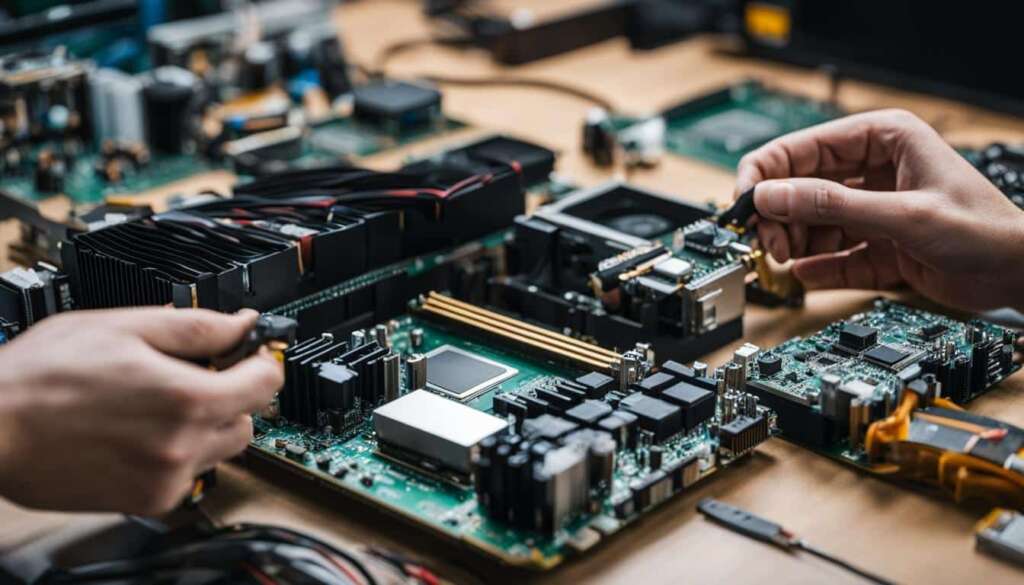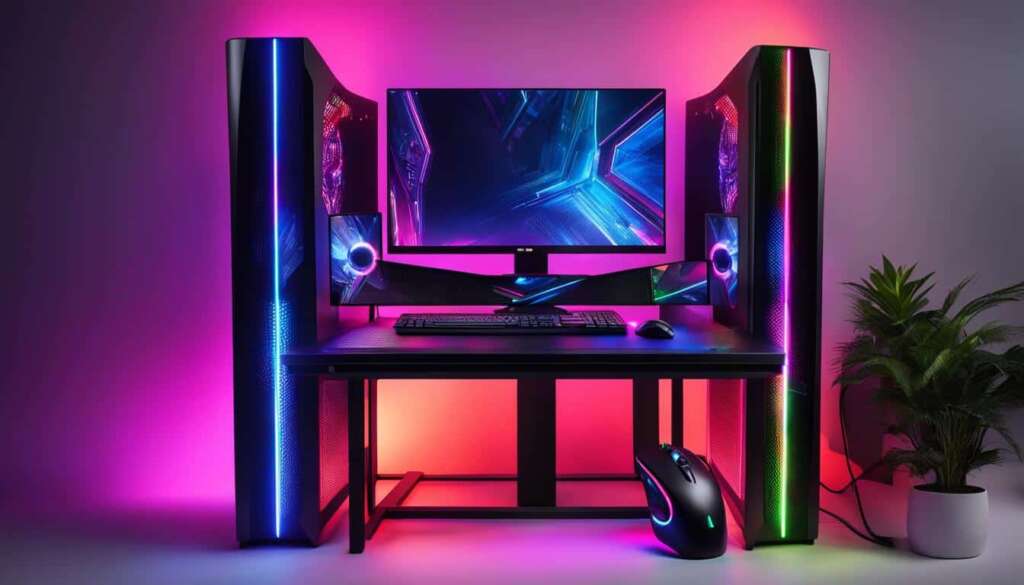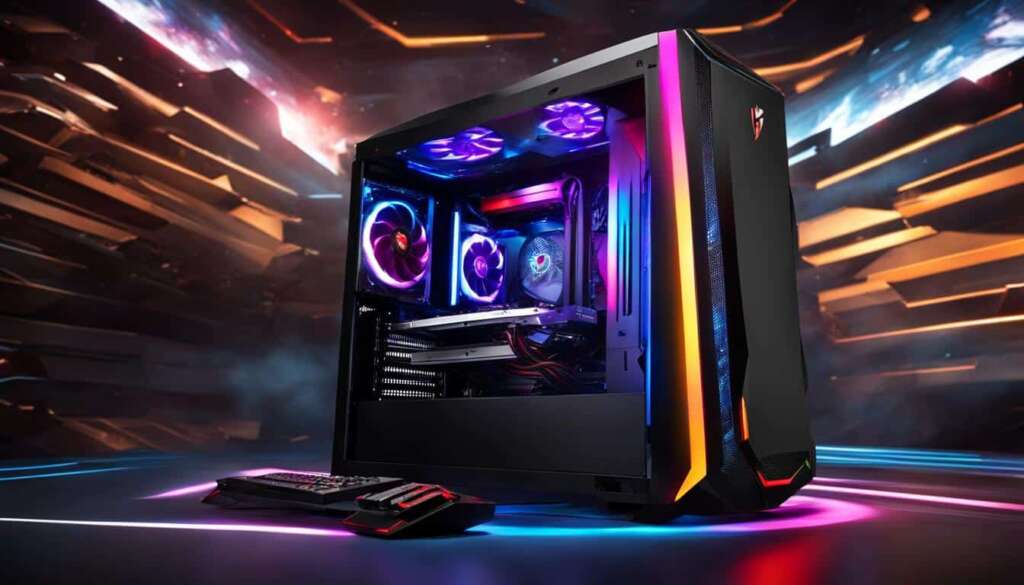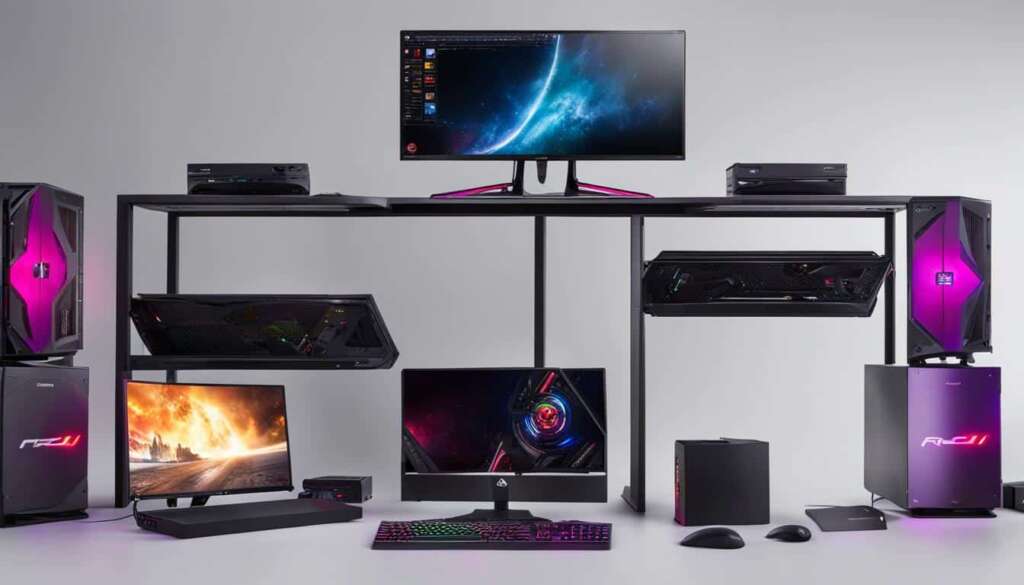Table of Contents
Welcome to our comprehensive guide on modular PCs, gaming PCs, custom PCs, and computer components. In this article, we will delve into the world of modular PCs and explore the benefits they bring to modern computing.
What is Modular Hardware?
Modular hardware is a concept that involves breaking down a circuit into separate modules instead of one complete setup. In the field of electronics design, this means splitting a complete circuit into several Printed Circuit Boards (PCBs) that can be connected to each other via cables or connectors. This approach is not new and can be observed in the assembly of computers, where a single motherboard is used with slots for various components. Similarly, platforms such as Arduino, Raspberry Pi, and BeagleBoard exemplify the trend of modular design in electronics, offering designers more freedom to explore possibilities at a lower cost.
Modular hardware, with its ability to separate a circuit into modules, provides several benefits in terms of flexibility, ease of assembly, and scalability. By dividing a circuit into smaller modules, designers have more freedom to arrange and customize their system according to their specific requirements. Moreover, modular hardware allows for easier maintenance and troubleshooting, as faulty modules can be easily identified and replaced without having to dismantle the entire circuit. This modular approach also facilitates upgrades and modifications, as new modules can be added or existing ones can be upgraded without the need for extensive rework.
“Modular hardware allows designers to have greater control over the composition and arrangement of their circuits, leading to more efficient designs and easier troubleshooting.” – Electronics Design Expert
What is Modular Hardware?
| Advantages of Modular Hardware | Examples of Modular Design |
|---|---|
|
|
Overall, modular hardware offers a versatile and efficient approach to electronics design, enabling designers to create tailored circuits that can be easily upgraded, maintained, and customized. With its growing popularity in various industries, modular design continues to revolutionize the way products are developed and manufactured.
Why Do You Need Modular Hardware?
Modular hardware offers several benefits that make it a preferred choice in certain scenarios. Firstly, it addresses space constraints by allowing designs to be split into modules that can fit within mechanical constraints. This is particularly useful in compact devices where every millimeter counts. By breaking down the circuit into manageable modules, designers can optimize space utilization and create more compact and efficient products.
Secondly, modular hardware facilitates ease of upgrades. In the rapidly evolving world of technology, components quickly become outdated and new, more powerful ones are introduced. With modular hardware, upgrading specific components becomes a breeze. Instead of replacing the entire system, users can simply swap out the outdated module with a newer one, saving time and money.
Another key advantage of modular hardware is reusability. By designing modules that are independent and interchangeable, developers can reuse the same module across multiple products. This not only saves costs in redesigning and manufacturing, but it also allows for greater flexibility in product development. Modules can be mixed and matched to create different configurations, giving companies the ability to offer a variety of products without starting from scratch each time.
Lastly, testing and troubleshooting are easier with modular hardware. When a circuit is divided into modules, it becomes easier to identify and isolate faulty components. Instead of having to test the entire system, developers can focus on individual modules, pinpointing the source of the problem more quickly and efficiently. This leads to faster debugging and better overall system performance.
To visually represent the benefits of modular hardware, here is a table showcasing its advantages:
| Advantages of Modular Hardware |
|---|
| Addresses Space Constraints |
| Facilitates Ease of Upgrades |
| Enables Reusability |
| Simplifies Testing and Troubleshooting |
Key Strategies in Designing Modular Hardware
In order to successfully design modular hardware, certain key strategies need to be considered. These strategies include:
- Splitting the parts: The first step in designing modular hardware is determining how to divide the components into separate modules. This involves grouping related components together, such as microcontrollers, communication modules, I/O modules, power modules, and analog modules.
- Interconnection: Once the parts have been split, the next step is to determine how to connect the modules together. This can be done using various methods, including stacking connectors or using cables. High-speed signal modules often require board-to-board connectors for stability.
- Scalability: When designing modular hardware, it’s important to consider scalability. This involves designing modules with future applications in mind and anticipating potential needs. By creating modules that can be easily expanded or modified, the hardware can adapt to changing requirements without requiring a complete redesign.
- Mechanical accuracy: Attention to mechanical accuracy is crucial when designing modular hardware. Each module must be carefully designed to ensure that it fits together properly within enclosures. This involves considering dimensions, tolerances, and alignment to ensure a secure and reliable connection between modules.
By following these key strategies, designers can create modular hardware that offers the benefits of flexibility, customization, and ease of maintenance and upgrades. Modular hardware allows for more efficient use of space, simplifies the testing and troubleshooting process, and enables easy scalability as technology advances.
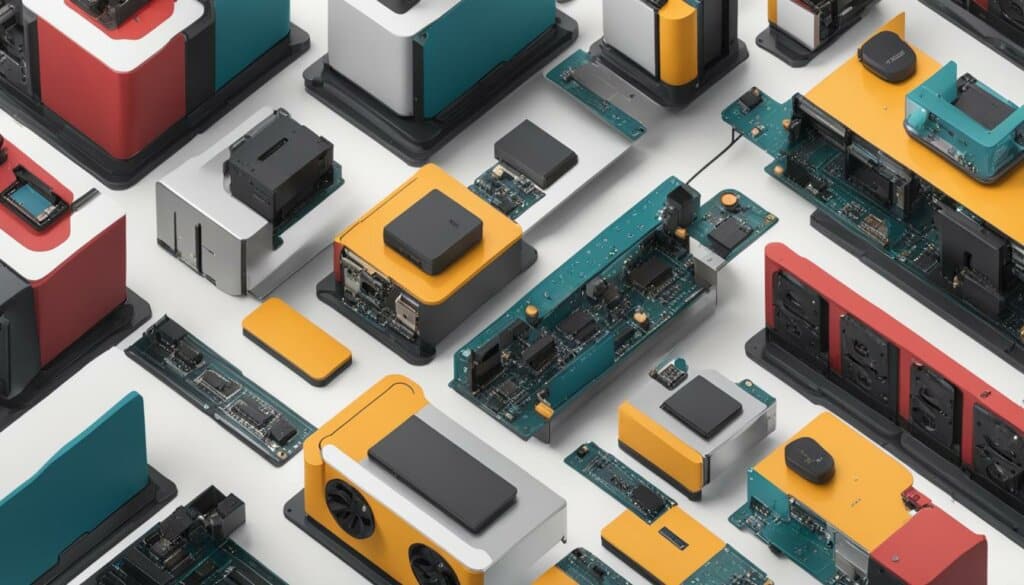
Designing modular hardware requires careful consideration of a few key strategies. Firstly, designers need to decide how many modules to create and how to group the components. Typical groupings include microcontrollers, communication, I/O, power, and analogs. Secondly, interconnection methods need to be determined, such as stacking connectors or using cables. High-speed signal modules often require board-to-board connectors for stability. Thirdly, scalability is important to think about, designing modules with future applications in mind and anticipating potential needs. Lastly, attention to mechanical accuracy is crucial to ensure modules fit together properly within enclosures.
Splitting the Parts
One of the key strategies in designing modular hardware is splitting the parts into separate modules. This allows for greater flexibility and ease of customization. By dividing the components into modules, designers can create a more efficient and modular system that can be easily upgraded and modified as needed. This approach also simplifies the testing and troubleshooting process, as faulty modules can be easily identified and replaced without affecting the entire circuit.
Interconnection Methods
Another important aspect of designing modular hardware is determining the interconnection methods between the modules. This involves selecting the appropriate connectors or cables to ensure a reliable and secure connection. The choice of interconnection method depends on factors such as the speed of signals, the required stability, and the mechanical constraints of the system. By carefully considering the interconnection methods, designers can ensure that the modules can be easily connected and disconnected, facilitating maintenance and upgrades.
Scalability and Mechanical Accuracy
Scalability is a crucial consideration in modular hardware design. Designers must anticipate future needs and create modules that can be easily expanded or modified. This allows for the system to adapt to changing requirements without the need for a complete redesign. Additionally, attention to mechanical accuracy is essential to ensure that the modules fit together properly within enclosures. Each module must be designed with precise dimensions, tolerances, and alignment to ensure a secure and reliable connection. By addressing scalability and mechanical accuracy, designers can create modular hardware that is flexible, customizable, and easy to maintain.
The Benefits of Modular Design in Other Industries
Modular design is not limited to the realm of electronics – it has found its way into various industries, revolutionizing traditional manufacturing processes and introducing new possibilities for flexibility and customization. One notable example of modular design can be seen in the furniture industry, with Swedish giant IKEA leading the way.
IKEA’s approach to furniture production is based on modular design principles. Customers can choose from a wide range of modular pieces, allowing them to mix and match components to create products that suit their specific needs. Whether it’s a sofa, wardrobe, or shelving unit, IKEA’s modular design ensures that customers can customize their furniture arrangements to fit any space or style.
This approach brings several advantages. Firstly, it offers flexibility, allowing customers to easily reconfigure their furniture as their needs change. Components can be added, removed, or replaced to accommodate different spatial constraints or design preferences. Secondly, modular design promotes cost-effectiveness. By offering basic modular components that can be easily combined, IKEA is able to produce functional yet affordable products. Lastly, the concept of modular design enables efficient production and distribution processes. The standardized nature of modular components simplifies manufacturing and assembly, resulting in faster production times and reduced costs.
| Advantages of Modular Design in Other Industries | Examples |
|---|---|
| Flexibility | Modular furniture that can be easily reconfigured |
| Cost-effectiveness | Functional yet affordable products |
| Efficient production and distribution | Streamlined manufacturing processes |
How Modular Design Benefits Product Development
Modular design plays a crucial role in product development by enhancing adaptability, streamlining the validation process, and enabling automation. Just like how LEGO pieces can be combined to create different structures, modular design allows for the reuse of designs and customization based on specific requirements. This standardization of parts leads to a more efficient validation process and quicker identification of any issues that arise. Moreover, modular design facilitates automation, reducing the time and effort spent on repetitive tasks and allowing designers to focus on other projects and explore new ideas.
By adopting a modular approach, companies can achieve greater adaptability in their product development process. The ability to easily add, remove, or replace modules allows for quick adjustments in response to changing market demands or emerging technologies. This flexibility enables businesses to stay ahead of the curve and respond rapidly to customer preferences, ultimately leading to a competitive advantage.
Furthermore, modular design simplifies the validation process. With standardized modules, designers can test and validate each component individually, ensuring their functionality and compatibility. This approach reduces the complexity of the validation process and allows for more targeted testing and troubleshooting. Any issues that arise can be isolated and resolved without affecting the entire system, saving time and resources.
Automation is another key benefit of modular design in product development. By standardizing modular components and their interconnections, tasks that were once manual can now be automated. This automation not only improves efficiency but also reduces the risk of human error. It allows designers to focus on higher-level tasks, such as innovation and optimization, rather than being bogged down by repetitive and time-consuming tasks.

Benefits of Modular Design in Product Development:
- Enhanced adaptability to respond to changing market demands
- Streamlined validation process through standardized modules
- Increased automation for improved efficiency and reduced human error
- Flexibility to customize and optimize designs based on specific requirements
Overall, modular design offers significant advantages in product development. It empowers companies to quickly adapt to market changes, ensures efficient validation and testing, and enables automation for improved productivity. By embracing modular design principles, businesses can enhance their product development process, stay competitive, and deliver innovative solutions to meet the evolving needs of their customers.
Modular Quantum Computing and Its Benefits for Businesses
Modular quantum computing is revolutionizing the world of business, offering a range of benefits that enhance efficiency and drive innovation. With the ability to reconfigure, add, or remove parts from quantum computing devices, businesses can now customize their quantum computers to their specific needs while staying within their budget. The customizability of modular quantum computing allows companies to tailor their computing power to suit their unique requirements, whether it’s for simulations, optimization, cryptography, or machine learning.
One of the key benefits of modular quantum computing is its resiliency. By incorporating redundant modules, the system becomes more robust, minimizing errors and damage to calculations. This enhanced resiliency is especially crucial in industries where accuracy and reliability are paramount, such as finance, healthcare, and logistics. Businesses can rely on modular quantum computing to provide consistent and dependable results, ensuring the integrity of their operations.
Another advantage of modular quantum computing is its upgradability. Rather than replacing the entire system, businesses can easily upgrade specific modules, keeping pace with advancements in quantum technology. This flexible approach to upgrades saves time and resources, allowing businesses to stay at the cutting edge of quantum computing without the need for a complete overhaul. It also promotes sustainability by reducing electronic waste and minimizing the environmental impact.
Security is a top priority for businesses, and modular quantum computing offers improved security measures. By implementing private access and ringfencing of modular parts, businesses can protect sensitive information and prevent unauthorized access. This level of security is essential for industries dealing with confidential data, such as banking, government, and defense. With modular quantum computing, businesses can have peace of mind knowing their quantum computers are safeguarded against potential threats.

Onshape: Enhancing Modular Design in Product Development
When it comes to implementing and maximizing the benefits of modular design in product development, Onshape is a leading cloud-native platform that offers innovative solutions. With its real-time collaboration capabilities, Onshape enhances transparency and fosters efficient collaboration among designers, developers, and stakeholders. The platform allows for seamless communication and feedback, ensuring that everyone is on the same page throughout the design process.
Automation plays a vital role in streamlining repetitive tasks and improving productivity. Onshape’s automation tools simplify complex processes, enabling designers to focus on more critical aspects of the project. By automating routine tasks, valuable time is saved, and productivity is enhanced. This ultimately leads to faster design iterations and a more efficient product development timeline.
“Onshape’s modular approach aligns with the benefits of modular design, making it a suitable tool for implementing and taking advantage of modularity in design processes.”
In addition to transparency and automation, Onshape offers a high level of customization. The platform allows designers to create custom features and configurations that align with their workflow and specific project requirements. With Onshape, designers have the flexibility to design and modify their projects according to their unique needs, resulting in highly tailored and optimized designs.
Accessibility is another key advantage of using Onshape. As a cloud-based platform, Onshape allows designers to access their designs from any device with an internet connection. This accessibility ensures seamless collaboration and easy sharing of designs with stakeholders, regardless of their location. Furthermore, Onshape’s cloud-based infrastructure eliminates the need for software installations and updates, simplifying the design process and ensuring that everyone is working on the latest version of the project.
Overall, Onshape is a powerful tool that enhances modular design in product development. With its focus on transparency, automation, customization, and accessibility, Onshape empowers designers to fully leverage the benefits of modular design, resulting in more efficient and innovative product development processes.
Conclusion – Modular PCs and Their Advantages
In conclusion, modular PCs offer numerous advantages in terms of flexibility, customization, and cost-effectiveness. With modular hardware, users have the freedom to build their own PCs and tailor them to their specific needs and preferences. Whether it’s for gaming, professional use, or any other purpose, modular PCs provide the flexibility to create a personalized computing experience.
One of the key benefits of modular design is its ability to optimize space constraints. By splitting the circuit into modules, designers can fit components within mechanical constraints, making it easier to create compact and efficient PC setups. Additionally, modular PCs allow for easy upgrades, as components can be kept on the same module, minimizing the need for major rework.
Moreover, modular hardware design promotes reusability, enabling the same module to be used for different products. This not only saves costs in redesigning but also allows for efficient testing and troubleshooting. Faulty modules can be easily detected and replaced without affecting the entire circuit, simplifying the maintenance process.
Overall, modular PCs offer a cost-effective solution for customizing and optimizing computing experiences. The advantages of flexibility, customization, and cost-effectiveness make modular PCs a popular choice for individuals and businesses alike. As technology continues to evolve, modular design will play a key role in shaping the future of computing by catering to individual needs and promoting innovation and efficiency.
FAQ – Modular PCs and Their Advantages
What is modular hardware?
Modular hardware is a concept where a circuit is separated into modules instead of one complete setup. It allows for more freedom in design and flexibility in terms of space constraints, upgrades, reusability, and testing.
Why is modular hardware beneficial?
Modular hardware offers several benefits including addressing space constraints, ease of upgrades, reusability, and easier testing and troubleshooting.
What are key strategies in designing modular hardware?
Key strategies in designing modular hardware include deciding how many modules to create and how to group the components, determining interconnection methods, considering scalability, and ensuring mechanical accuracy.
How does modular design benefit other industries?
Modular design is widely used in various industries, such as in the production line of companies like IKEA. It allows for customization, flexibility, and cost-effective production of functional products.
How does modular design benefit product development?
Modular design enhances adaptability, streamlines the validation process, and enables automation. It allows for customization based on specific requirements, standardization of parts for efficient validation, and automation of repetitive tasks.
What are the benefits of modular quantum computing for businesses?
Modular quantum computing allows businesses to customize their quantum computers, enhance resiliency through redundant modules, easily upgrade their systems, improve security, and reduce manufacturing costs. It also enables quantum networking for increased computing power and decreased computer size.
How does Onshape enhance modular design in product development?
Onshape is a cloud-native platform that offers design solutions for modular design. It enables real-time collaboration, automation of tasks, customization, and accessibility of designs from any device. It aligns with the benefits of modular design, promoting transparency and efficiency.
Source Links – Modular PCs and Their Advantages
- https://www.onshape.com/en/blog/advantages-of-modular-design-in-product-development
- https://ionq.com/posts/the-top-5-benefits-of-modular-quantum-computing-for-business
- https://resources.pcb.cadence.com/blog/2020-what-is-modular-hardware

